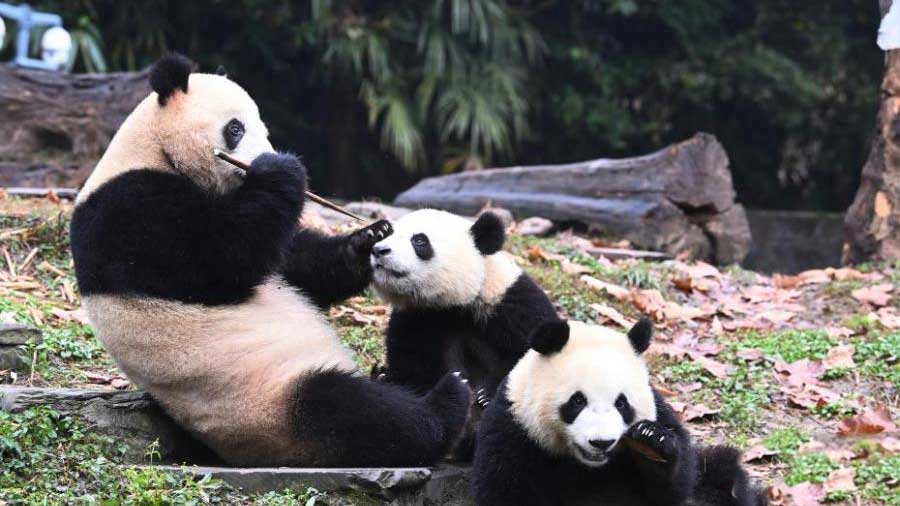Optimized epidemic response to help China achieve "J-curve" economic recovery
BEIJING, Dec. 19 (Xinhua) -- A senior economic official said the optimized response China adopted to deal with COVID-19 is expected to have a "J-curve effect" on the economy that will help it gain strong growth momentum in 2023.
"It may cause disruptions to the economy in the short-term, but from the perspective of a whole year outlook, it is a boon," said Han Wenxiu, executive deputy director of the office of the Central Committee for Financial and Economic Affairs.
He said that the return to normalcy in life and work will pick up the pace in the first half of 2023, especially in the second quarter, with increasing economic vitality unleashed.
"We have the confidence, conditions, and capacity to turn China's economy for the better as a whole," Han said at a think-tank forum held after last week's Central Economic Work Conference, at which Chinese leaders decided priorities for the country's economic work in 2023.
The tone-setting conference was held after China optimized its anti-virus approach to allow home quarantine for asymptomatic and mild cases and cut mass nucleic acid testing, among others.
The change was made in accordance with the weakened pathogenicity of the virus. The focus of the epidemic response strategy was thus shifted from infection control to case treatment with the objective of preventing severe cases.
Observers have said with the flow of people and exchange of goods to be further facilitated, the new policies are set to gradually revive business activities across a wide range of sectors, including consumer spending, investment, and foreign trade -- thus, the huge market potential will be unleashed to allow economic output to expand.
"The Chinese economy has strong resilience, great potential, and vitality, and the fundamentals remain sound in the long run," Han said, adding that optimized epidemic response, coupled with existing and new policy steps, will exert a major positive impact on economic recovery.
Reflecting on the previous response strategy, Han and his colleagues in the office of the Central Committee for Financial and Economic Affairs told Xinhua that those strict control measures were necessary in the past when the fatality rate and the proportion of severe cases remained high.
Over the past three years, China has withstood waves of the pandemic and successfully dealt with over 100 cluster outbreaks, effectively safeguarding the life and health of its 1.4 billion population. The country has managed to keep its COVID-19 severe cases and death rates among the lowest in the world.
But China never considers anti-epidemic efforts and economic growth as an either-or choice. Rather, it stresses the importance of coordinating the two in a highly efficient way. And the goal was largely achieved.
In 2020, China was the first major economy across the globe that registered growth. For the past three years, China registered an average annual economic growth of 4.5 percent, significantly higher than the world's average.
Han said China's economic output for the year 2022 is expected to exceed 120 trillion yuan (17.2 trillion U.S. dollars). Though the growth rate is likely to undershoot the target set at the beginning of the year, many other development goals can be well accomplished. The sales and export volumes of China's new energy cars both ranked first in the world, and the country's grain output reached 650 million metric tonnes for eight years in a row.
Han said these results did not come easy, considering the volatile international situation and the complex and arduous tasks at home.
For the year ahead, the Central Economic Work Conference stressed implementing the optimized epidemic response policies, as well as strengthening coordination and alignment to ensure a smooth transition of COVID-19 response phases and the maintenance of social stability.
The officials said the smooth transition was not only a requirement for public health but for economic operation as well. In the face of a sudden surge of infection cases, China must ensure that the public's medical treatment and medication needs are met, industrial chains are not interrupted, and prices for medicines and daily necessities stay stable, they said.
The light at the end of the tunnel can be seen as long as the transition period is well-managed.
Photos
Related Stories
- China steps up financial support for economic recovery
- China's economy expected to further recover: official
- China's economy shows fresh signs of recovery in October
- China maintains recovery despite newfound challenges
- B20 calls for unity, cooperation to drive global economic recovery
- Post-pandemic economic recovery discussed at ASEAN Global Dialogue
Copyright © 2022 People's Daily Online. All Rights Reserved.









